In 1928, Alexander Fleming discovered penicillin by accident, revolutionizing medicine (also by accident). Generative AI is having a similar “moldy petri dish” moment in the field of content creation. Artificial intelligence can write novels, generate stunning digital art, and help you achieve peak creative performance, that’s as long as you know how to use it properly.
In today’s article, we explore the exciting and bizarre world of AI-generated content. We explain how generative AI works, dig into why you should use it in your projects, and show you a few tips and tricks along the way. But first, let’s start with the basics.
💡 Before you start… Want to learn more about artificial intelligence tools and the technologies that power them? Check these articles when you’re done reading.
🚀 The Rise of Generative AI in Content Creation
First things first, what is generative AI?
In a broad sense, generative AI is a subset of artificial intelligence that involves generating new content, think text, music, videos, or… images of cats wearing top hats. 🐈🎩

While the AI scene had been growing for a number of years, its popularity exploded with the launch of OpenAI’s ChatGPT in November 2023. Since then, generative AI has been riding the wave of the new AI revolution, with dozens of new tools popping up every month.
If you’re a content creator, chances are you’ve experimented with at least one of hundreds of AI-powered tools to speed up your creative workflow. Maybe you generated visuals for your website with Midjourney. Or, perhaps, you used ChatGPT to add a unique flavor to your writing.
Generative AI has a ton of other benefits too. It can help you:
- 💡 Generate fresh ideas for different content types.
- 🚧 Overcome the creative block when you get stuck.
- 📊 Identify trending topics, audience preferences, and high-performing content.
- 🎞️ Speed up video and image editing.
- 🎨 Create marketing materials for your brand.
- 🌐 Automatically translate content to hundreds of languages.
- And more…
And the best part?
You don’t need to learn how to code to tap into AI’s power. The most popular artificial intelligence platforms use what’s called “conversational AI.” This means that you can communicate with them using instructions or “prompts” inside familiar chat-like interfaces.
🧙♂️ How Content Creators are Using AI to Speed Up Workflows
Designing a website, filling it with content, and tweaking for SEO (search engine optimization) used to take days or weeks. At a minimum, you had to know HTML / CSS, have the flair of a novelist, the creativity of a designer, and the patience of a monk to make it happen.
And today? You can pull it off with a website-building platform and a few AI tools to boot.
Whether we like it or not, generative AI has changed the way we ideate, plan, and work. And since there are no signs of AI going anywhere, you might as well make the most of it.
There are four levels across which AI is helping content creators get stuff done:
Level 1: Brainstorming Ideas
Brainstorming ideas is fun, until it isn’t.
It starts with laughs, big swings, and the thrill of the rally. Ideas bounce back and forth, adrenaline is high. But then it turns into a repetitive echo of “no, that won’t work because…”
So, why not ask AI to explore a few new avenues? Or maybe combine concepts that seem so distant and unrelated that pineapple on a pizza suddenly seems like a grand idea.
While generative AI won’t give you unique, one-in-a-million ideas, it can help you patch holes in your reasoning, find connections between your left-field musings and your right-hand reality, refine existing ideas, and give cliche, overused topics new, unique angles.
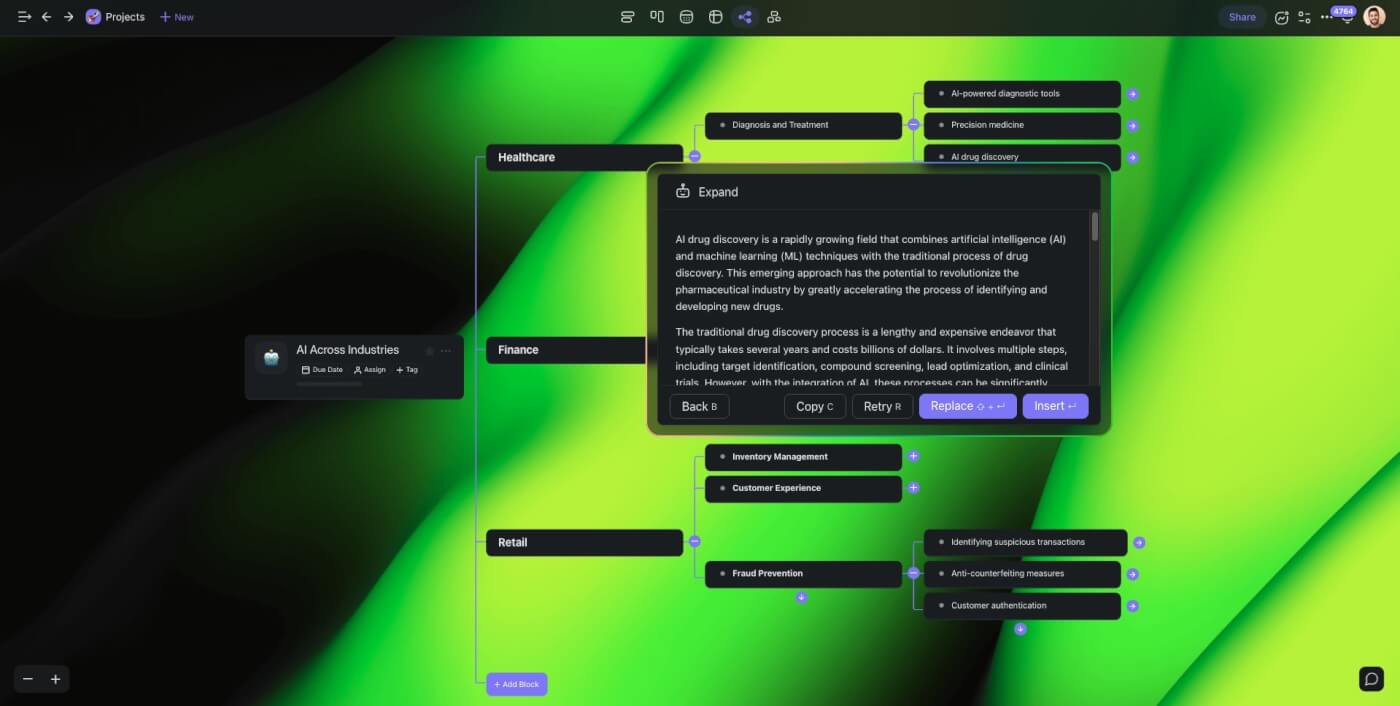
Level 2: Outlining and Planning
Ok, let’s say you have your ideas lined up. What’s next?
Some content creators prefer to wing it while others come up with intricate plans, create mockups, and write spanning outlines. If you belong to the latter, AI will help you kick things off.
You can use generative AI to create an outline for an article, brainstorm up with shot lists or scene descriptions, draft a script for a YouTube movie, or generate a basic layout for a website.
From structuring technical documents and presentations to developing detailed storyboards or planning content for online courses, AI can do it all without breaking a sweat.
At Taskade, we use our Workflow Generator to map out ideas, speed up planning, and outline social media and blog content, including the article you’re reading now. 😎
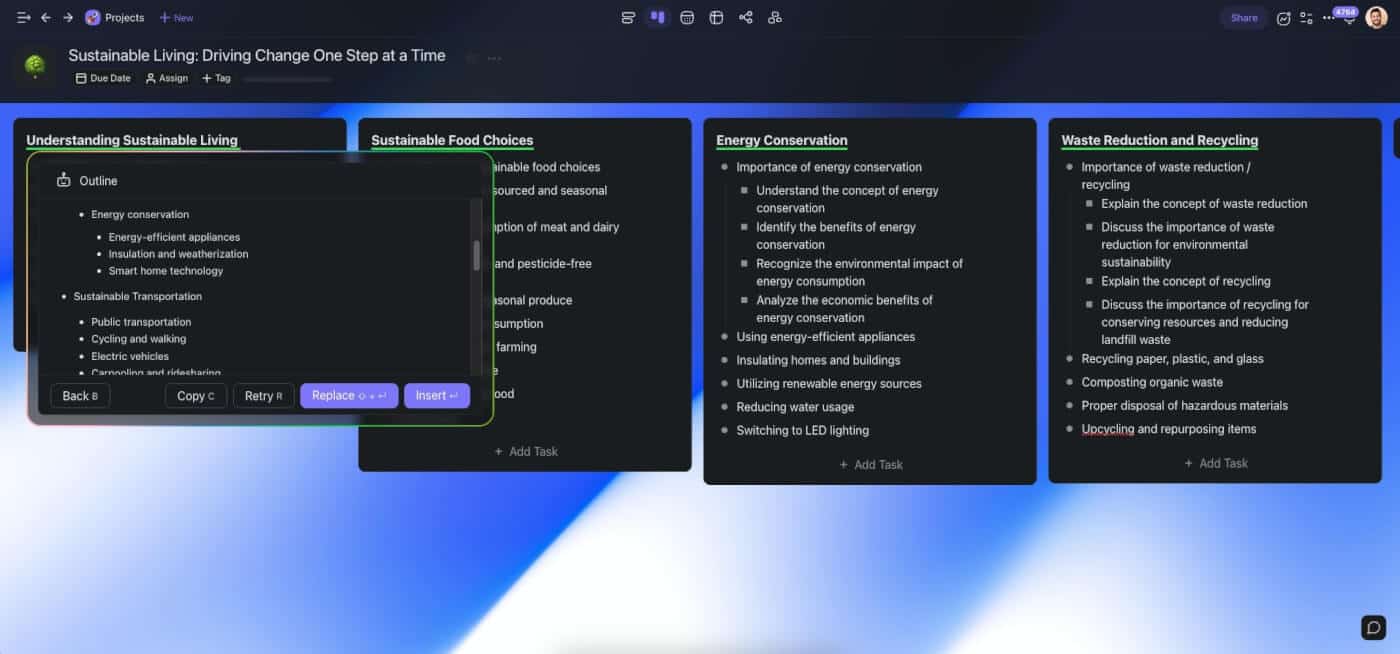
Level 3: Improving Writing Quality
Large language models (LLMs) — like GPT-4 that powers ChatGPT — are trained on vast amounts of textual data. This gives them an excellent grasp of the nuances of natural language. Including sarcasm and irony, because the Internet can’t get enough of those.
All that makes generative AI a must-have tool for every writer. Whether you’re just new to the game or have already sold your soul to the publishing industry, AI can help you:
- 🌳 Outline your documents
- 🤯 Overcome writer’s block
- 🔡 Expand your vocabulary
- 🚥 Experiment with different writing styles
- 🌟 Polish grammar and syntax
- 👥 Tailor copy to your target audience
- 💭 Summarize resources and simplify research
Phew… Impressive, huh? Disclaimer: Artificial intelligence CAN’T replace a solid, flesh-and-blood editor with years of experience under their belt. But it can give you an excellent creative springboard and a second pair of “eyes” to look over your terrible first drafts.
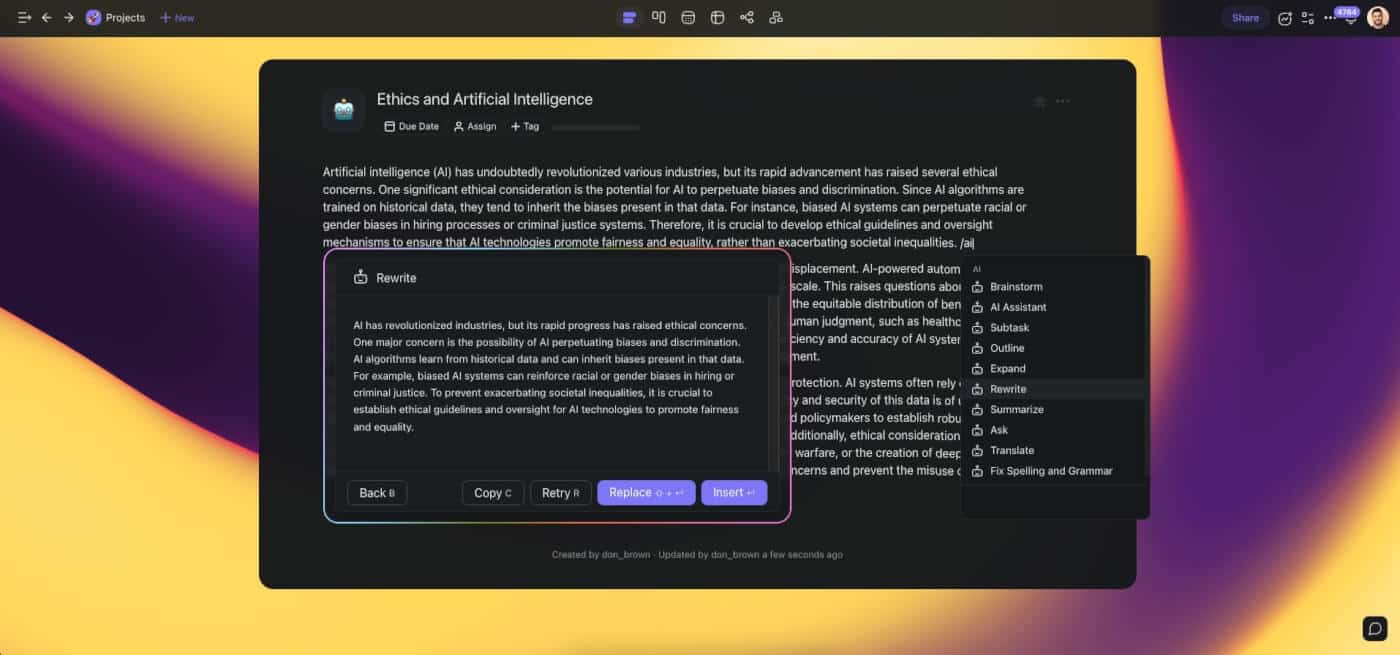
Level 4: Creating Content from Scratch
We’re at a point where you can mass-generate written or visual material and put it out there without cringing at the lack of emotional connection. That’s particularly true for FAQs, product descriptions, or data reports, the types of content that don’t require full human involvement.
Of course, you don’t want to offload your latest political exposé to an algorithm, any more than you’d let AI craft your breakup anthem. There’s a unique human touch, a certain je ne sais quoi, that AI currently can’t replicate. Plus, it doesn’t know your audience as well as you do.
At the end of the day, artificial intelligence should be your creative companion, not a replacement for your own work. It shouldn’t complete the creative puzzle for you but merely help you develop the small bits and pieces that will eventually grow and turn into:
- 🌳 Detailed paragraphs
- 🎈Engaging introductions
- 🎯 Compelling calls to action (CTAs)
- ➕ Elegant transitions.
- 📈 Data-driven insights
- 🔘 Comprehensive explanations
- And much more…
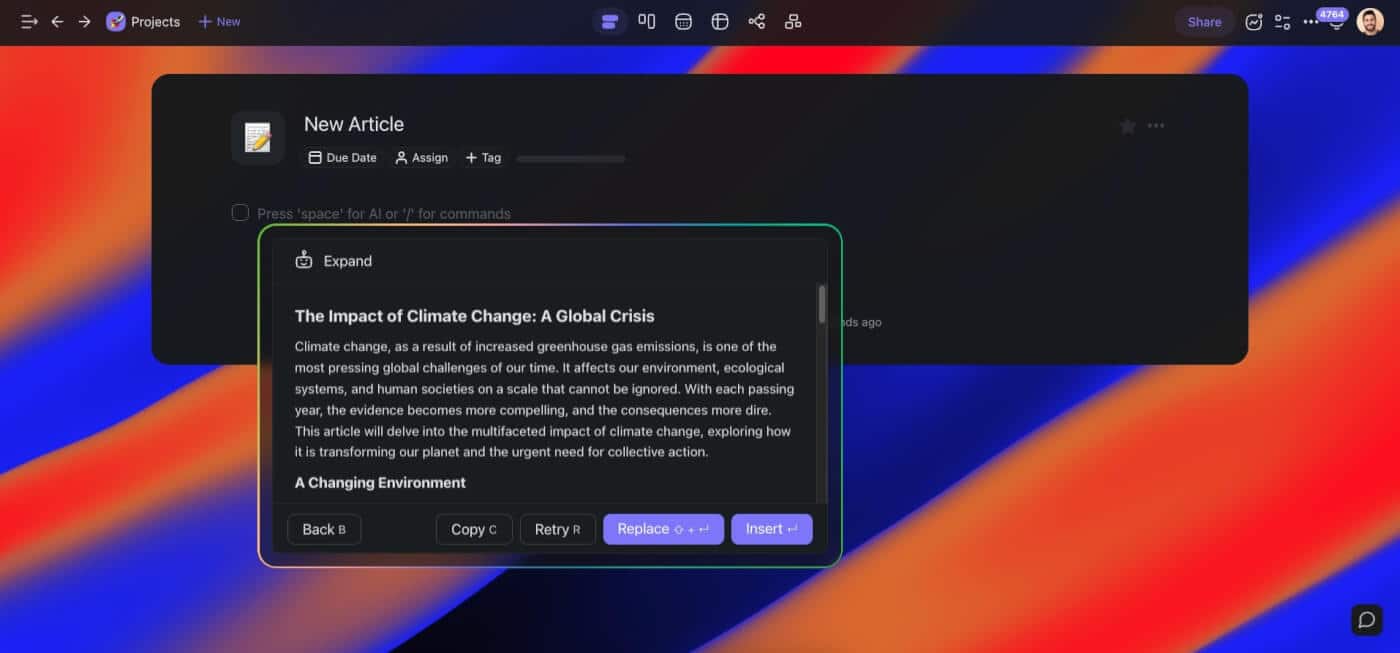
Craft captivating introductions and finish with powerful calls to action (CTA)
🚧 Challenges of Using Generative AI in Content Creation
In the 15th century, Gutenberg’s printing press revolutionized the world by making books more accessible. But many scribes and religious institutions were initially resistant to the change, fearing it would lead to the loss of jobs and decrease the value of handwritten texts.
AI tools seem to be stuck in a similar gray zone. Their capacity to generate content is excellent, but it also poses a few interesting questions, especially if you’re a content creator.
💭 “Should I let AI write this paragraph or type it myself?”
💭 “Can I still consider my blog “personal” if the content is AI-generated?”
💭 “Who owns the copyright when AI writes a bestseller?”
💭 “If an AI writes a comedy script and nobody laughs, can we still call it a ‘comedy’?”
Since AI tools are so new, nobody really has answers to those questions. The creative process is a personal experience and the idea of sharing it with or outsourcing it to a machine may feel strange. And even if you get over that part, there are some technical limitations to keep in mind.
AI models are only as good as the data they are trained on. When AI faces a task that goes beyond its training data, it may spiral down a rabbit hole of half-truths and dream-like visions, a phenomenon known as AI hallucinations (confabulations seem to be a more fitting term).
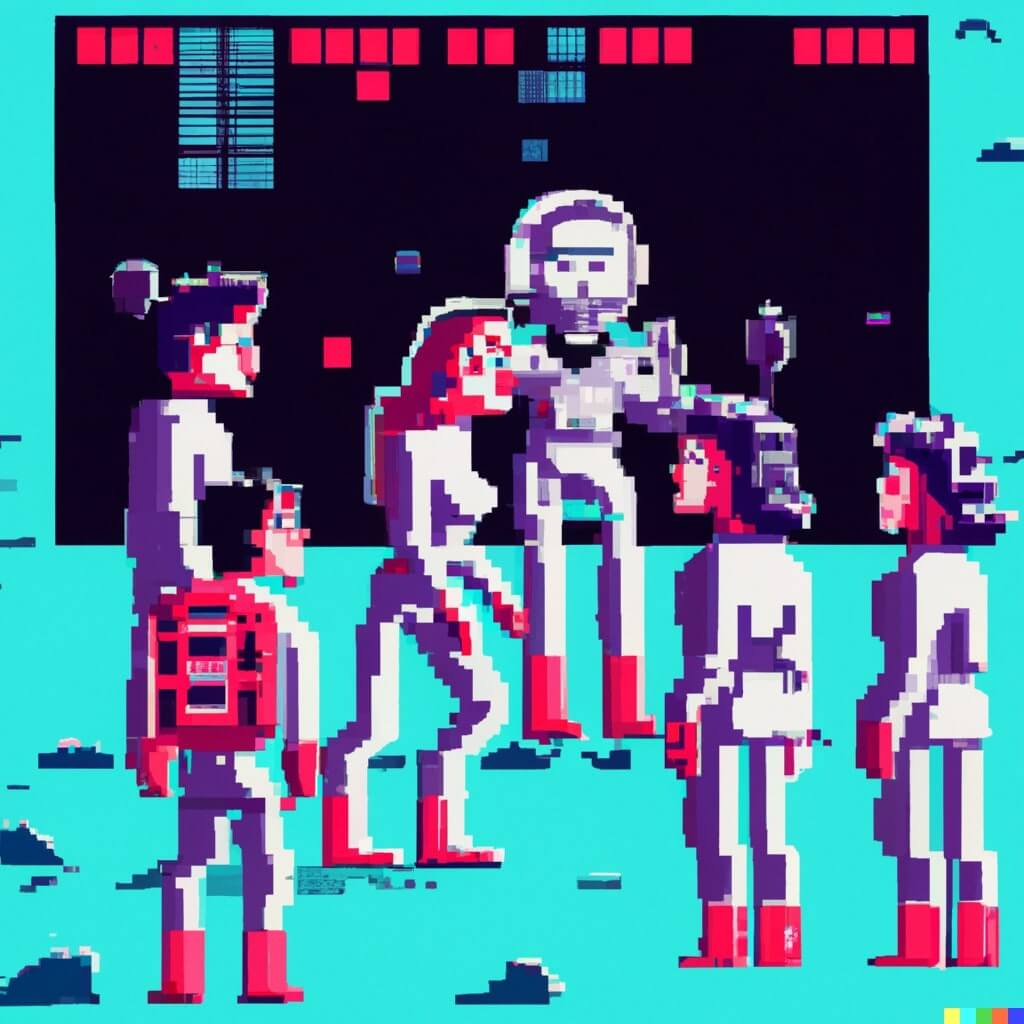
But there is also good news. While AI models tend to get things wrong or stretch the truth, they got things right most of the time and are getting better each day. Sometimes, that unhindered creativity can be a good thing, as long as there is a human in the loop to rein in the antics.
At the end of the day, you should treat generative AI as a tool, not your muse. Use it as a source of inspiration, a creative sidekick that can help you move in the right direction and get unstuck when you face a creative block. AI may be your brush, but you are the painter.
🔮 The Future of Generative AI in Content Creation
So, what’s in store for generative AI in the next 5, 10, or 15 years?
A little over a year ago, nobody (maybe except for AI developers) would’ve thought that AI tools like ChatGPT will disrupt so many domains. Less than a week since its launch, OpenAI’s chatbot had one million active users, growing faster than Facebook, Twitter, or Instagram.
Today, there are hundreds (thousands?) of open-source and commercial AI tools across every possible creative category. You can choose from writing assistants, text-to-image generators, video and photo editing software, and design apps, with new platforms popping up every day.
We can expect more tools for content creators to implement artificial intelligence in some shape or form. And there sure is plenty of headspace and niches to fill. AI is already taking leaps into more specialized domains like VR, video generation, and photo & video editing tools.
Over 80% of marketers have already implemented AI into content marketing activities. Gartner predicts that by 2025, 30% of marketing communication will be AI-generated. Chances are your favorite brands have been sending you AI content for a while and you haven’t noticed.(1)
The development of open-source large language models (LLMs) offers a promise of democratizing artificial intelligence. Models like LLaMa that Meta released earlier this year allow more creators to train, personalize, and use artificial intelligence in small-scale DIY projects.
“So, will AI replace content creators?”
Unlikely. But writers, designers, and marketers who can master those tools early will have an upper hand in the market. Something to consider in your L & D plans for 2023 and beyond.
🐑 The Last Word: Generative AI and the Evolution of Content Creation
Groundbreaking, sophisticated, unsettling, we’re on the fence about what’s the best way to describe the emerging AI tech. Perhaps, it’s all of those things and much more. But at its binary heart, it’s just a tool like any other. A tool that transforms the way we work and think.
One thing is certain. If you’re a content creator, you can’t afford NOT to have generative AI in your digital toolbox. It will help you automate repetitive tasks, brainstorm ideas, approach problems from unique angles, and overcome the creative block (you’ll thank us later).
And speaking of tools… Do you want to tap into the power of generative AI and supercharge your creativity?
🤖 Custom AI Agents: Deploy custom AI agents to streamline everything from generating ideas to organizing drafts and finalizing content.
🪄 AI Generator: Leverage AI to produce creative outlines, engaging content, and even full drafts based on natural-language descriptions.
✏️ AI Assistant: The assistant can suggest language improvements, ensure tone consistency, and help with fact-checking and editing.
🗂️ AI Prompt Templates Library: Explore a wide array of AI prompt templates tailored for writing, content creation, and other tasks.
And much more…
💬 Frequently Asked Questions About Generative AI in Content Creation
How can AI be used as a content creator?
AI can act as a powerful tool for content creation in a variety of fields such as journalism, digital marketing, entertainment, and education. It can automatically generate blog articles, images, videos, and other types of content. In digital marketing, it’s used to analyze user behavior to create personalized content and advertising for increased engagement and conversions. In the entertainment industry, AI is used to create music, screenplays, and art by learning from existing works and generating unique combinations.
What is the benefit of generative AI?
Generative AI, a subset of artificial intelligence that focuses on creating new content or data, offers myriad benefits. It can produce a wide range of outputs, from text and images to music and videos, often with a degree of creativity and novelty that can mimic human-like abilities. Generative AI is an excellent tool for automating repetitive tasks and streamlining workflows. It’s especially useful in product design, content creation, and scientific research.
What type of AI model is used for generative AI?
Generative AI employs a variety of models depending on the specific use case. For instance, large language models, such as GPT-3 and GPT-4, are typically used for generating human-like text. These models are trained on vast amounts of text data, enabling them to generate coherent and contextually relevant sentences. For image generation, Generative Adversarial Networks (GANs), diffusion models, and their variants are widely used.
How can generative AI speed up the content creation process?
Generative AI can significantly streamline the content creation process. For instance, it can generate comprehensive outlines for articles or scripts, helpinh writers focus on refining and personalizing content. In product design, AI models can create a variety of design mockups based on certain parameters, significantly reducing the time traditionally required for brainstorming and initial design stages. In digital marketing, AI can rapidly develop a multitude of personalized advertisements or social media posts, enhancing reach and engagement.
What are the benefits of using generative AI in content creation?
Generative AI is a powerful tool in content creation, capable of generating a large quantity of material, such as blog drafts or product descriptions. It can facilitate a range of content types, from reports and blog posts to images and videos. Ultimately, generative AI enables content creators to expand creative horizons, automate repetitive tasks, and increase productivity.
Are there any limitations or challenges in using generative AI for content creation?
While generative AI presents promising potential for content creation, it does come with several limitations. AI may generate inappropriate or irrelevant content as it lacks a true understanding of context, cultural nuances, and ethical implications. This can lead to possible biases being replicated in its output, which is a by-product of the data it was trained on. Secondly, the quality of generated content may vary, sometimes producing nonsensical results.
How can generative AI improve the quality of the content created?
Generative AI has the potential to greatly improve the quality of content in several ways. It can augment the productivity of content creators by automating routine tasks, generating initial drafts, or offering suggestions to stimulate creativity. AI can also use data analysis to understand what type of content performs better and apply those insights to future content generation. Finally, AI can create personalized content at scale, tailoring material to individual users based on their behavior, preferences, and needs, improving engagement.



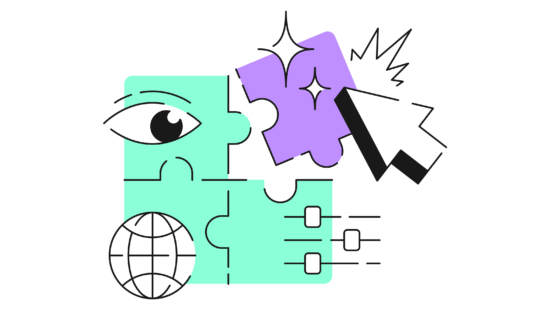 How to Use the Method of Loci in 2024 — A Mnemonic Device for Memorization
How to Use the Method of Loci in 2024 — A Mnemonic Device for Memorization 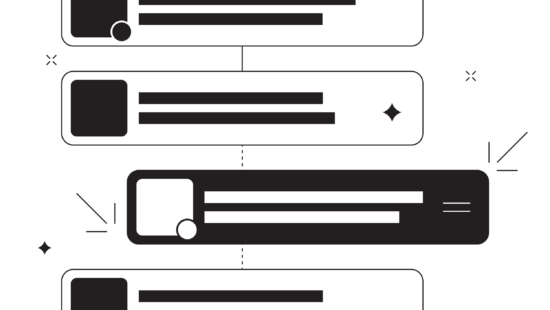 Here’s How Eat the Frog Can Boost Your Productivity in 2024!
Here’s How Eat the Frog Can Boost Your Productivity in 2024!  8 Best AI Tools For Team Productivity
8 Best AI Tools For Team Productivity  Creating AI Agents to Boost Your Coding Efficiency
Creating AI Agents to Boost Your Coding Efficiency  Gantt Charts vs. Roadmaps: Choosing the Right Tool for Your Project
Gantt Charts vs. Roadmaps: Choosing the Right Tool for Your Project  11 Best AI Tools for Writers to Create Content at Scale
11 Best AI Tools for Writers to Create Content at Scale